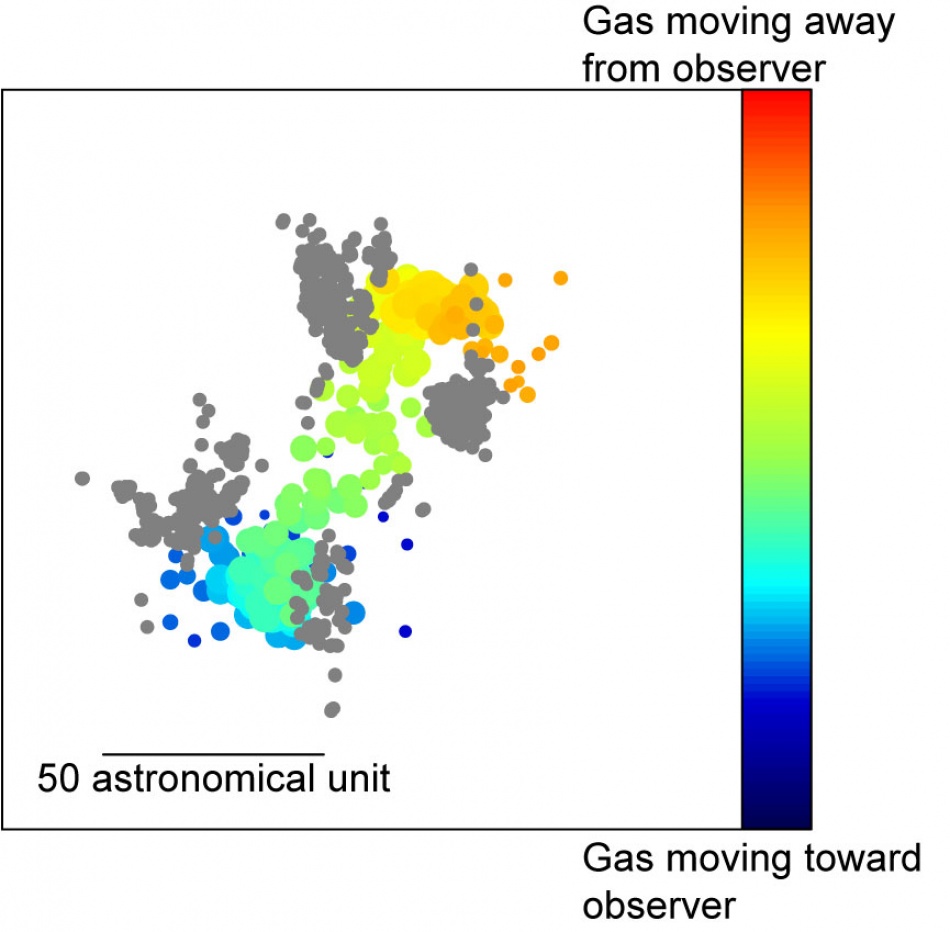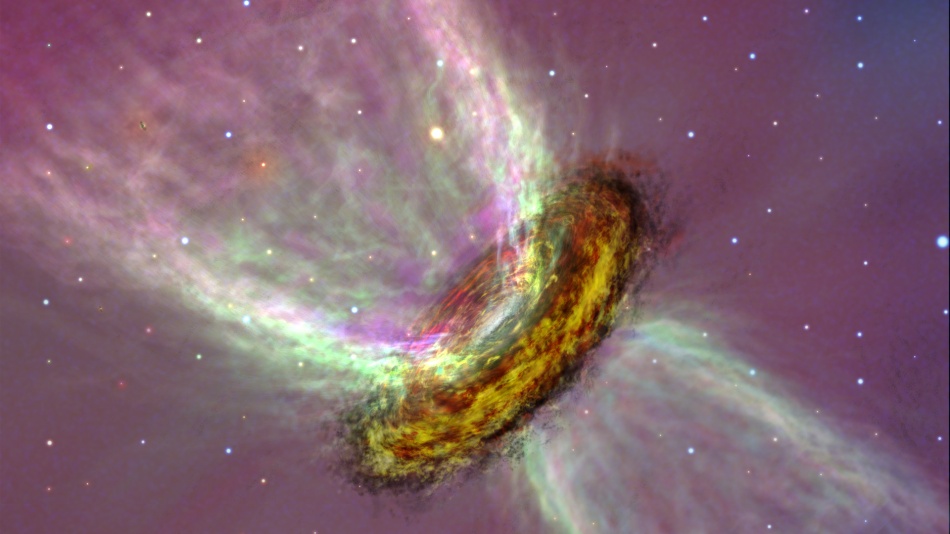Results
The team detected the two lines from the hot water molecules and clearly revealed the distribution. The distribution of the emissions from the 1700 degrees Celsius water molecules was similar to that of the jet observed via the SiO maser. The team interpreted this to mean that water molecules in the jet from Source I are emitting the radio maser.
The radiation from water molecules at 2700 degrees Celsius was found to have a structure similar to that of Source I at the base of the jet. Interestingly, the team found that this hot gas seems to have a disk-like shape. Detailed analysis indicates that the rotational velocity of the disk is 10 km per second.
The team also found;
- the temperature of the rotating disk reaches 3000 degrees Celsius or higher,
- the central star should have at least 7 times more mass than the Sun,
- the diameter of the disk is estimated as about 80 times larger than the Solar System.
- the radio emissions come from a rotating ring-like structure or limb of the disk viewed edge-on.
One of the team members, Honma, said, “Our observations uncovered the nature of Source I, and we can understand the previous observational results about Source I in a consistent manner. These are all thanks to ALMA. Thanks to this state-of-the-art telescope, we can observe the target at higher frequency and higher resolution. In addition, thanks to VERA, we have a good distance estimate to Source I. This results in accurate estimates for the size of the disk and other physical quantities.”
This study settles the long-standing problem; is Source I a jet or a gas disk. The result clearly shows that Source I is a gas disk.


Figure 3: The left panel shows the radio emission from the hot water vapor around Source I observed by ALMA (color), superposed on the SiO maser spots detected by VERA (grey).
The colors in the left panel indicate the motion of radio signals from the water molecules. The blue in the lower left side means that the gas is moving away from the observer, while the orange in the upper right side does that it is moving toward. The left panel can be interpreted as the edge-on view of a rotating gas disk. The grey colored SiO masers can be interpreted as that we observe the root of the jet coming from the disk.